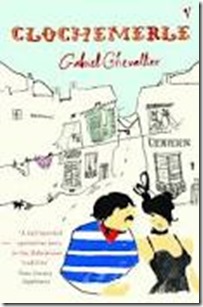“Drink moderately….just one glass, for instance” See below
F.A.Q.s ABOUT WINE
I am often astonished when dining out to note that so many people show very little interest in food (unless there’s not enough of it), and show similar disinterest for the wine on offer. This despite the great number of newspaper and magazine articles, live tastings, TV wine-demonstrations etc. Knowing just a little about wine appreciation genuinely helps anyone enjoy their glass. So, now and then I am going to answer questions I get, starting with……
Q. If you are tasting wine seriously, should you look, smell, sip, swirl around your tongue and mouth and eject?
A. At an organised wine tasting the answer must be "yes", (especially if you are going to drive a car afterwards) But even when you spit out, remember you are still absorbing alcohol. A wine importer of my acquaintance was breathalysed driving home after a wine tasting at which he had not swallowed a drop and was shown to be "over the limit". The sample taken a little later by the Police doctor, however, showed that the alcohol level in his blood was well below the danger level. The alcohol had lingered in his mouth but had gone no further.
The other point is that if you are tasting a lot of wines and you swallow, your senses will become dulled by the alcohol. And tasting is a serious business, on which millions of pounds may rest. I once observed some of the greatest experts at work tasting 1200 Sauvignon Blancs from all over the world, during a two-day period. That number was too many for all but three of the very top professionals, one of whom actually made notes on all of them.
You can learn a lot about tasting and improve your perceptions, but you need a reasonable sense of smell and good taste buds and if you haven’t got them you can never be a great taster. But almost everyone can enhance their enjoyment by taking an interest in tasting.
Ater you’ve had a look at what’s in the glass, swirl the wine around a bit, put your nose right down to the wine and take a long, steady sniff. Practise this and soon you will sense the wine’s aroma and its alcohol. Now sip a little wine and run it over your tongue, swish it around your mouth, suck it and little by little it will tell you about itself.
Your tongue can detect four basic tastes: sweet, sour, salt and bitter and you will not find the four sensations coming simultaneously, from different parts of the tongue. The tip is the most sensitive part for sweetness; the edges perceive the salt; sour flavours concern the side and the underneath and bitterness the back part. With the wine in your mouth, about eight to ten seconds elapse for the various sectors to report to your brain and you gain an overall impression.
As a first step take on some contrasting wines, a white with a bit of sweetness, such as a Riesling, a dry red and a dessert wine. You will soon find that a little time spent on getting to know what you are drinking will richly reward you.
*******************************************************************************
Remember, wine is to be enjoyed – but don’t just take my word for it……
I have enjoyed great health at a great age because everyday since I can remember I have consumed a bottle of wine except when I have not felt well. Then I have consumed two bottles. ~A Bishop of Seville
Wine improves with age. The older I get, the better I like it. Anonymous
Wine is the most civilized thing in the world. Ernest Hemingway
I cook with wine. Sometimes I even add it to the food. W.C. Fields
Wine makes daily living easier, less hurried, with fewer tensions and more tolerance. Benjamin Franklin
The best kind of wine is that which is most pleasant to him who drinks it.
Pliny the Elder, Natural History
If God forbade drinking, would He have made wine so good? Cardinal Richelieu
*******************************************************************************
ALCOHOL IN COOKING
Q: If I add wine when cooking a stew, sauce or sautéed dish, does the alcohol “disappear”?
A:
When wine is used in cooking, the alcohol vaporises at a relatively low temperature, leaving only the flavour of the wine to enhance and blend the other food flavours. For instance, if wine is added to a sauce or some other mixture to be cooked over direct heat, the alcohol will be vaporized at 78ºC (172.4ºF), considerably before the boiling point of water 100ºC (212ºF) is reached.
In fact, it is cooked out in just the simmering stage. If wine is added to a casserole dish or used as a baste for roasting meat, the heat of the oven will have the same effect. As an example, a cup of wine in a large shallow pan put in a 150ºC (300ºF) oven for 10 minutes would lose all of its alcohol.
This loss in alcohol has an effect upon the calorie count, too. A dinner wine such as Burgundy or dry Sauternes will lose 85 per cent, of its original calories when subjected to a sufficient amount of heat to cause it to lose all its alcohol. The remaining 15 per cent, of the calories are from non-alcohol substances in the wine, such as sugar.
Dessert wines such as port and sherry contain more alcohol and sugar than the dinner wines, and hence are higher in caloric value. Used in cooking, they will evaporate and lose calories just as the dinner wines do. If they are cooked for a longer period—more than an hour in a 150ºC (300ºF) oven (as in the case where ham or roast meat is being cooked in the oven), most of the sugars become caramelis







